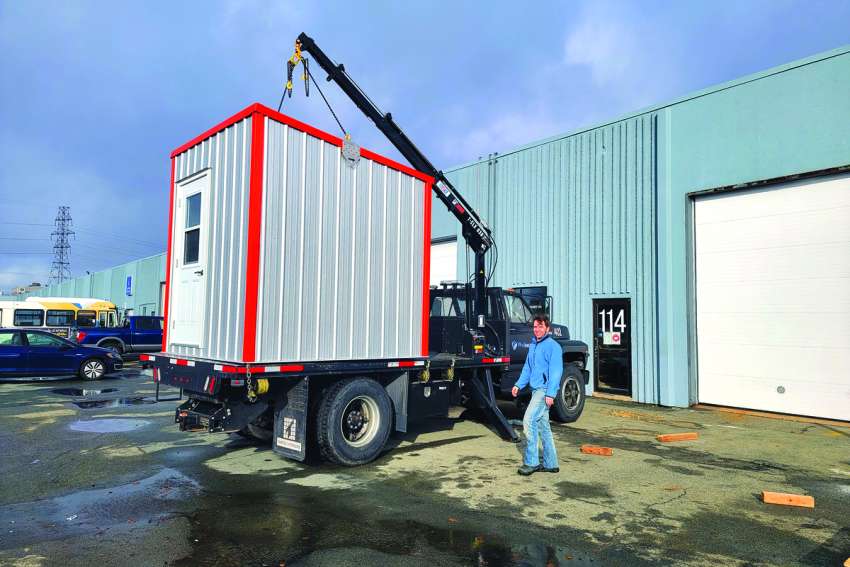The Emergency Shelters Project in Halifax was introduced by Archbishop Brian Dunn in the fall of 2021 to immediately benefit the local unhoused population while they explored opportunities for long-term transitional housing.
“Like a lot of cities in Canada, homelessness is pretty rampant (in Halifax). We have the tents around (outside) and those sorts of things,” said John Stevens, project manager for the Emergency Shelters Program. “Our Archbishop felt called to make a pastoral priority of homelessness and so we began to marshal our resources to do something about it.”
In the fall of 2021, the Archdiocese constructed temporary shelters on multiple church properties across the diocese in a race against the frigid east coast winter that was fast approaching. Stevens says the outpouring of support from donors and partner organizations such as The Halifax Assistance Fund played a big role in getting the campaign up and running.
“The initial story itself is pretty fantastic as we needed to build 20 shelters which would cost about $220,000. Not only did we raise it all in six weeks but we also were able to build and put up the shelters in those six weeks and have people living in them,” he said.
The initial plan was emergency housing, with the shelters designed to quickly get those experiencing homelessness safely out of the cold for the winter before ideally moving on after the thaw. The shelter team quickly realized the homelessness issue was more chronic that anticipated, leading to an extension of the program.
The Emergency Shelters Project has continued to address the needs of vulnerable persons, from Halifax and beyond. This included an increase in the number of 8x8 structures built, all with a built-in bed, heating and cooling system, air exchanger and everything Stevens says “you would need to be comfortable.”
“We put metal siding on the outside with a slanted roof that’s designed to hold Nova Scotia snow loads and they sit up on blocks so they are elevated off the ground. We also tie on two guy wires that go into the ground to further stabilize the shelter from wind and other elements which is a real risk around here,” he said.
The team partners with local organizations and uses the help of provincial listings to identify potential tenants who then go through an intake process. Archdiocese communications manager Aurea Sadi said the biggest hurdle is the program can only deal with certain applicants.
“One of the key things we have learned is that we can only serve a particular type of person. We do not have the capacity to help those with high mental health concerns, addictions or other medical needs in the ways that they need to be helped,” Sadi said.
“There is no live-in staff, medical clinics, all that kind of stuff, and the residents kind of come and go as they please. That requires people to have a certain level of acuity to survive a bit on their own,” Stevens said. “We will go through checklists with folks to see if there are people we can help who need different services that we can’t provide.”
Of the 58 people supported since the initiative began, 14 people have moved on to independent housing, eight have found supportive housing and 16 currently remain in shelters. The other 20 occupants have either left on their own accord or due to needing additional professional care elsewhere. Among these is Michael, a shelter occupant of almost two years who was housed in August and has since secured independent housing.
“It is so nice to land so soft and with so much care, love and patience. I have been treated like a father and a mother should treat their son. You gave me love and rebuilt my trust in people. I was able to relax, so I could rebuild without stress and each step got me closer to this beautiful apartment,” his testimony read.
Stevens has seen such life-changing stories first-hand and is a testament to the initiative's lasting impact.
“Matching each person's unique situation and story to what they need, to have dignified housing is the approach we take. We have had people go to apartments, move back in with family and be reconciled, find more supportive environments and so it's the whole gamut,” he said.

